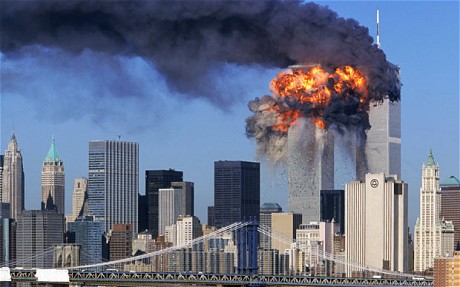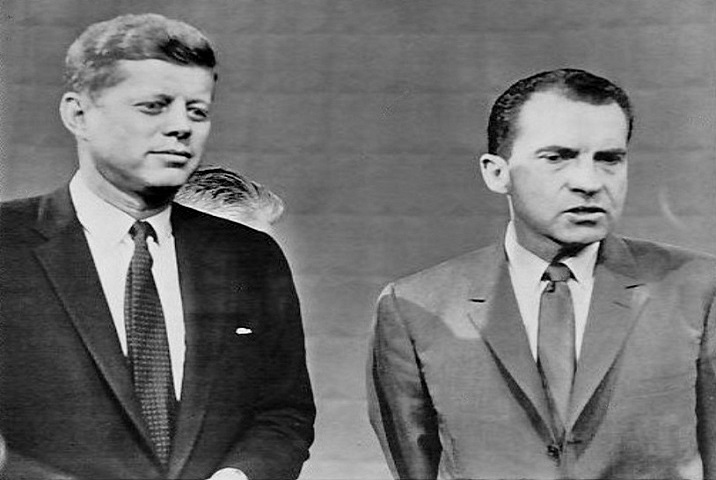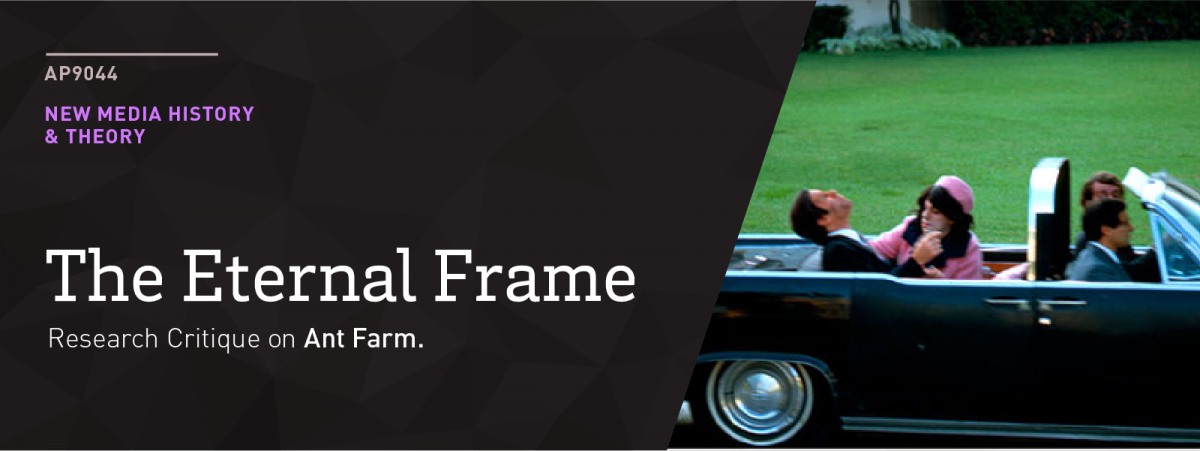Understanding Ant Farm and their works would be impossible without first understanding American culture from the early 50s to the late 70s. The rise of the automobile’s importance in American society was one that began as the would-be members of the collective were still children. Freeways ripped through cities as the American life began to revolve more and more around the automobile. A symbol of physical, cultural and societal mobility, the car ushered in an era of motels, drive-thrus and other car-centric innovations.

Rise of Media in America
The members of Ant Farm were also the first generation to witness the process of telematic visual media “moving into the homes for the first time in the form of TVs.” The prolific rise of the Student Movement against the Vietnam War as well as the civil rights movement sparked a time in society where young people began to question and challenge everything about the established status quo in their society. Media became a central focal point of American life and everything that happened around the collective was communicated through it. Media was the most important conduit through which Americans experienced the world around them.
This was the backdrop upon which Ant Farm was created. This was the zeitgeist that birthed The Eternal Frame.
Taking the form a rather surreal video documentary, The Eternal Frame is a video art re-enactment of the infamous Zapruder film—footage of John F. Kennedy’s assassination during a presidential motorcade around Dealey Plaza in Dallas, Texas. The work mainly serves as a discourse to question the role that media plays in the “creation of (post)modern historical myths” and an exploration into the power of mediated image.
Much of this works appeal comes from it’s familiarity in the public conscious. Being a key evidence in the Warren Commission‘s investigation, the individual frames of the footage was scrutinized by many to work out the ballistic trajectory of the assassination. It was also the image that was circulated by the media, almost becoming a substitute for the real experiences of many of the people there were actually present at the assassination, and serving as a surrogate memory for those who were not. The film ensured that the assassination no longer existed as a tragic event that happened to a single individual, but rather, as a collective memory that has existed beyond it’s time till this day. In essence, the film recording transcended JFK’s death from a historical event to a cultural myth that is still obsessed over till this day. The image is powerful and relevant, only because it exists.
The power that this image held was the reason Ant Farm felt motivated to explore the idea of re-creating the assassination. It is both important and interesting to note that the re-enactment was based solely on the Zapruder film, precisely because it was so well circulated. By acting out the performance and recording it again, Ant Farm calls into question the act of preserving a memory or moment in an external media format. Is the event now less significant or authentic because it exists outside of the self. Does one react to the event with distance because of the externalization of it’s image?
In modern context, the 9/11 attack on the World Trade Center would be a good example of an image that made a spectacle of tragedy. The image of the inferno engulfing the twin towers is one that is burned into the public consciousness; an image circulated, repeated and perpetuated by the media. Our memories of 9/11 are painted through the lens of the media coverage surrounding it as opposed to our personal (and/or direct) experiences of it.

The TV President
Being the first president to be elected on television, JFK is perhaps the first president to have had to deal with the spectacle of politics on TV. Much of his presidency happened on the television. The first televised Presidential Debate featured Kennedy and Nixon.

Kennedy was wildly popular among the people during his term. The (direct) interaction he had with the citizens through televised speeches would have made the president seem closer, more accessible and more in touch with the people. Kennedy also had the fortune of making large and bold statements on TV throughout his term: from the proclamation of choosing to put a man on the moon, to the his national address of handling the Cuban missile crisis, JFK spent a significant amount of time on-screen. The memory of his presidency could be attributed to his many TV appearances.
The Power of the Image
As such, the image of the televised assassination of JFK becomes more poignant as it exaggerated the spectacle of the tragedy. The image became powerful because it was the first time something of this scale was captured on film. This way, The Eternal Frame serves as a morbid reminder that JFK is remembered by the world only because of the media experiences that surrounded this historical event. The conspiracies surrounding his death only exist because Abraham Zapruder wasn’t able to continuously shoot the entire procession.
Even the title of the work is an interesting choice that pokes fun at television media. JFK’s gravesite memorial is a torch entitled The Eternal Frame. The torch is designed to withstand wind and rain to remain lit for all eternity. Similarly, the existence of the Zapruder film will have the image of the assassination burnt into the memory of the mass conscious for all eternity. Therefore, it becomes clear why the Zapruder film was of interest to the collective. The image challenges the notions of how we think of media as a society and it’s role in affecting our realities and our memories of it.
SaveSave



Excellent Kapi! Actually the memorial of Kennedy is the Eternal Flame, which is was then altered as the Eternal Frame to accentuate the media element of the work. Excellent research piecing together Kennedy’s history and relationship to the medium of television. Yes, the debate with Nixon launched his Presidency and then the assassination ended it, both of which are iconic televisual moments. And it is most appropriate that you make the connection to 9/11, another tragic event that was burned into the public consciousness through the televisual image broadcast around the world. The Eternal Frame may have been made in 1975, but Ant Farm was ahead of its time in terms of understanding the power of the mediated image. Excellent work!!
This research is thorough and comprehensive! Some of the great points I missed in my are very well explained in your text, such as the social background and media culture at that time, and the importance of the work is brought to current light by the comparison with 911. You even discovered the title which pays tribute to the torch of JFK‘s gravesite! Thank you for the great piece!